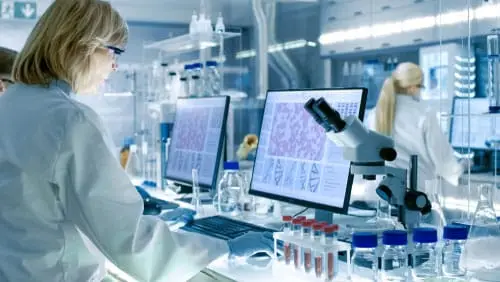
The Connection Between Whole Body Donation and Cancer Research
Whole body donation will always have a connection to the growth of medical education and especially medical research when it comes to discovering the causes and treatments of infectious diseases and cancer.
With tissue gathered from donations, researchers can learn how cancer grows and spreads, how certain drugs work against cancer in different groups of people and discover new ways to prevent and treat cancer.
Here are only some of the many milestones in cancer research with the help of data discovered through donations:
- Rudolph Virchow identified white blood cells (leukocytes) in cancerous tissue, making the first connection between inflammation and cancer.
- The TP53 gene, the most commonly mutated gene in human cancer, is discovered in 1979.
- In 1984, Mark Davis and Tak Mak isolated gene coding for part of the T cell receptor, a key to the immune system’s functions.
- Through analysis of tissue, scientists were able to identify that breast cancer tumors have multiple estrogen receptors that selectively receive and bind in their cells, confirming the theory the body’s own estrogen was fueling the growth.
- In 2010, the FDA approved sipuleucel-T, the first human cancer treatment vaccine to be approved to treat prostate cancer.
- After three decades, the first new treatment for bladder cancer was introduced in 2016.
- In 2017, in a landmark trial, the first gene therapy for cancer was introduced using the chimeric antigen receptor-modified T cell (CAR-T) therapy.

While cancer certainly is not picky, certain people are at higher risk of certain types of cancer based on race, ethnicity, age, and gender and these factors influence how cancer affects individuals differently and how certain treatments work. This is why a variety of different samples is necessary for thorough cancer research. Since humans inherently are so unique, donations are the gateway to precision medicine helping medical professionals know to give the right dose of the right drug to the right person.
With access to a variety of samples, cancer research can thrive in all aspects. The study of tissue allows us to learn more about how cancer cells work. The knowledge of how cells work tied to the outcomes of treatment for people who donate their tissue will provide valuable information for future prevention.
This also leads to discovering the actual causes of cancer linking genetic factors and environmental factors such as diet, culture, toxins, and lifestyle choices. This in turn leads to better treatment of cancer, learning who is susceptible, why it spreads, the initial cause, what drugs are effective in treating, and possibly how to prevent it altogether.

With whole body donation accepting almost everyone as donors, these programs are able to give cancer research grounds the cadavers and samples they need to continuously make breakthroughs in the treatment and prevention of cancer. If you would like more information about whole-body donation and how you can aid in the progression of cancer research, check out some FAQs here or contact us today.

